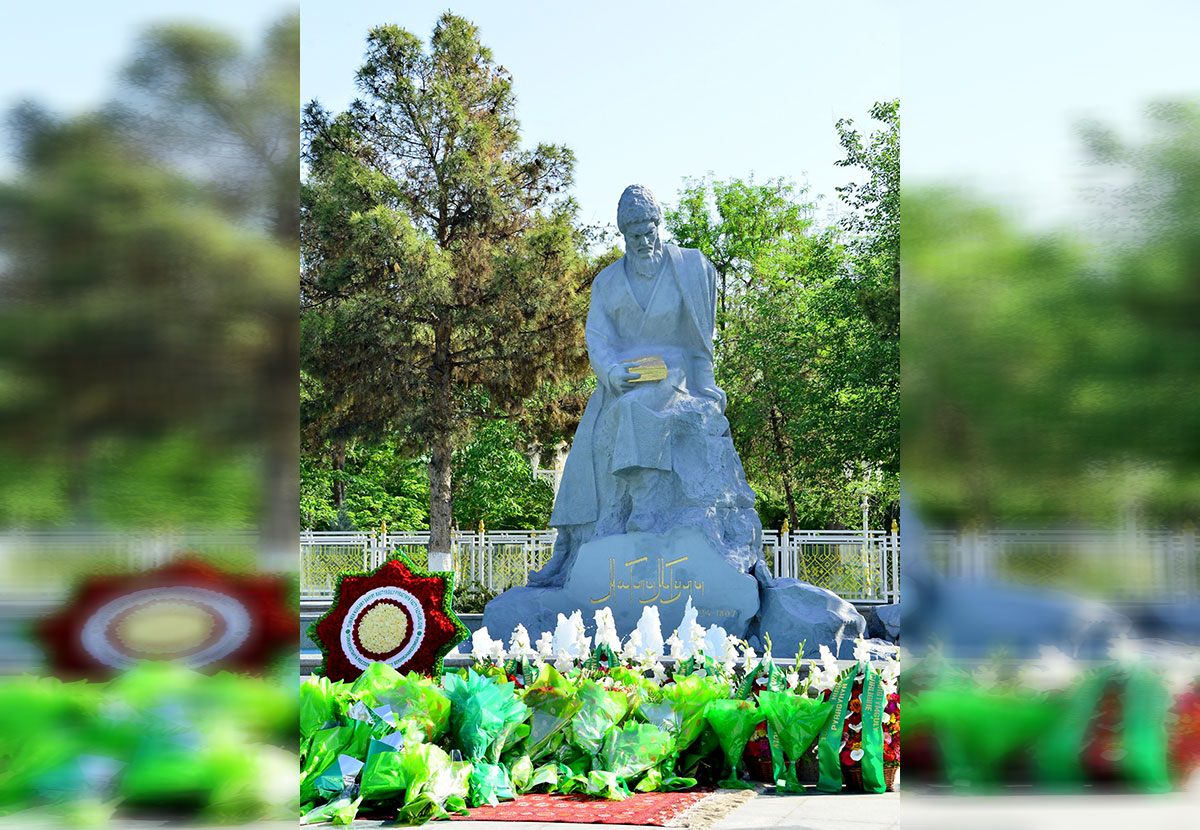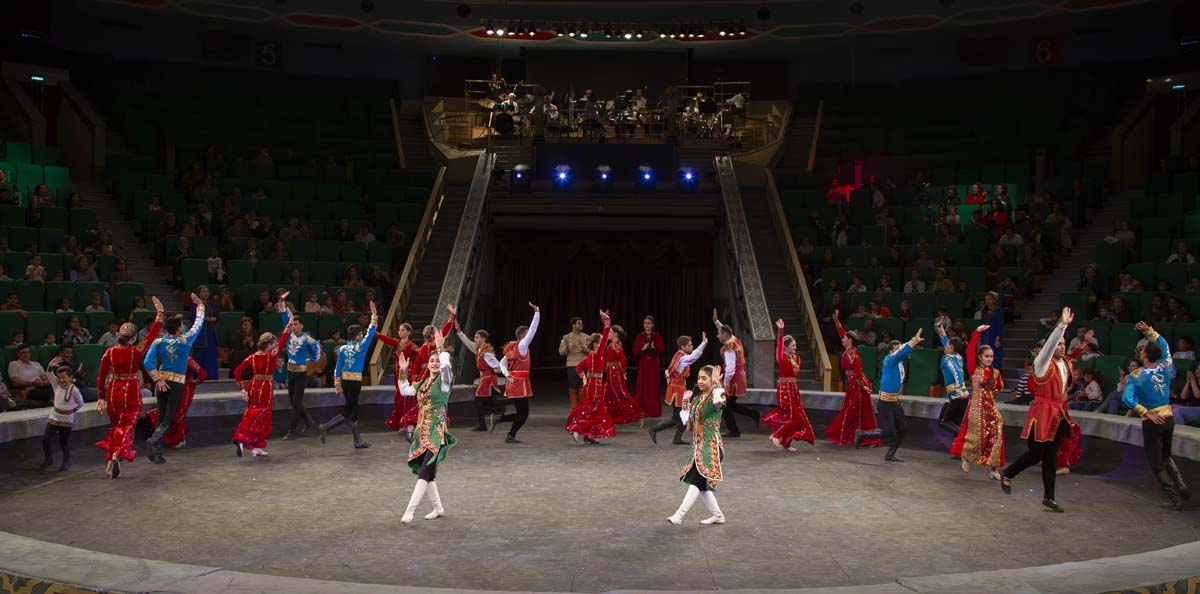For more than half a century, the historical center of Ashgabat, Makhtumkuli Avenue, has been adorned by a memorial ensemble dedicated to the classic of Turkmen poetry of the 18th century, Makhtumkuli (Pragy). The monument was erected in the center of the park on the spot where the world's first Bahá'í temple stood, damaged in the 1948 earthquake and demolished in 1963. The figure of the poet is carved from gray basalt, and the pedestal is a natural stone composition that imitates the outlines of a wild rock.
The monument was built in 1970 according to the design of Ashgabat architects Vladimir Vysotin, Viktor Kutumov and sculptor from Minsk Viktor Popov, who won the all-Union competition. Stone carvers from Armenia S. Grigoryan and G. Hovhannisyan took part in the creation of the monument.
This monument, according to the general opinion of art historians, is one of the best works of monumental art in Turkmenistan, and has become a key milestone in the development of portrait sculpture. The image was based on the portrait of Makhtumkuli, created by the painter Aykhan Khadzhiev back in 1947, and Since then, it has been widely circulated in reproductions, on the pages of books, newspapers and magazines, on postal envelopes, postcards, stamps, badges, and also on carpets.
As candidate of art history Galina Saurova writes in her monograph “Turkmen monumental art”, the authors of the monument successfully coped with the task of creating an environment reminiscent of a corner of the picturesque nature of the Sumbar Valley, the birthplace of the great poet. Through the organic connection of the monument with nature, the creators of the monument revealed one of the facets of the ideological concept - the unity of the poet with his homeland. At the same time, the nature of the environment was due to the peculiarities of the interpretation of the image of the poet, who is depicted sitting with a manuscript in his hands and immersed in deep thought about the problems of life, good and evil, the fate of the people, about poetry. On the polished surface of one of the stones of the pedestal there is an inscription with the name of the classic. His figure, located on a dais, seems to grow out of a stone block and is perceived as a majestic silhouette against the sky and tree crowns.
The Belarusian sculptor Viktor Popov managed to show the scale of Magtymguly's personality, his high human dignity, spiritual uplift and deep concentration. The complexity of the poet's inner world, his mood and versatility are revealed not only through the psychologism of the image created in stone, a noble face radiating wisdom and inspiration, but also through a pose that harmoniously combines movement and peace, stability and that lightness, which is the impulse of a new movement. It seems that the poet, immersed in his thoughts, literally just sat down on a stone in his native mountains. The combination of rest and movement in the pose of the poet, when viewing the monument from different angles, makes it possible to see the notes of drama and sorrow inherent in his image, then the excitement of a lover and the spirituality of a folk shakhir, or the greatness of a sage and thinker.








